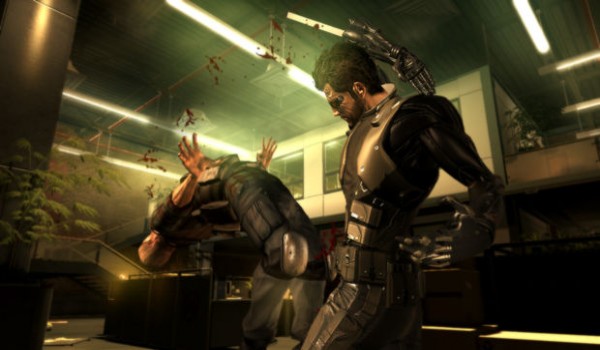
Ever since the first cinematic trailer of the fresh-looking Dead Island came out, I’ve been massively hyped for the release of the game. An open world zombie survival horror FPS co-op game with RPG elements, focused on melee gameplay? Sounds like a surefire winner, right? Well, truth be told I got everything I wanted out of the game, but perhaps owing to its far-reaching ambition, Dead Island has tons of glitches, issues that prevent it from living up to the huge hype and expectations surrounding it.
Just forget about the story and enjoy…
Sadly, it’s best to do so and whether you like it or not you will find yourself occasionally skipping what NPC quest-givers or main characters are trying to say.
So, this time the zombie apocalypse happens on a paradise island called Banoi, a famous vacation spot for celebrities and rich folk. The four main characters, after a long night partying, wake up in a hotel surrounded by zombies. As you escape the hotel (pretty much the tutorial part of the game) you’re aided by a voice on the radio. Unfortunately, you get bitten but are luckily saved by a group of survivors before you get eaten alive. You then find out that the four main characters from the hotel are immune to the disease. Then there you go! Free roam starts and you can start to save people, receive quests, and more importantly, kill zombies!

The story of Dead Island tries its best to be engaging and emotional, but it simply wasn’t enough to make me care much. Towards the end, I found myself more engaged in discovering what we had to do or kill next than wondering how we were going to escape the island. When the credits started rolling I definitely felt a sense of satisfaction - not from the story, but from the gameplay and how fun it was. The story was completely forgettable and felt like it was placed there simply for the sake of having one, something that kind of betrays the tone of that first trailer.
Melee combat can actually work for FPS
Admirably, developer Techland tried to make the game realistic as possible, whatever that means in a game where you battle the living dead. With the goal of realism in mind, Dead Island’s gameplay is all about melee combat. Guns aren’t the stars of this zombie game. Melee weapons are all you need to survive Dead Island. While guns are present in the game, there’s not enough lying around for them to be a main weapon of choice. While Dead Island’s devs say ammo is limited, it really isn’t if you use it wisely. It’s just that the damage difference between guns and weapons is huge, so you’re better off rocking most of the game with melee weapons and saving up your guns for later.
Controls are pretty responsive for a game focused on melee combat. Everything you do relies on stamina so you have to play smart, knowing when to swing, dodge or run away from a group of zombies. All you need to engage a zombie up close is built into the game mechanics, and when you get bitten or hit it’s mostly at your own fault for over-extending or using too much stamina by swinging like a madman. When you engage a zombie, a cursor indicates what part of its body you will hit if you swing your weapon so it’s pretty fun and easy if you’re attempting to behead a zombie, or simply chop its arm with precision. You can also kick them off their feet, which I think is broken since it’s the only move that doesn’t require stamina. Early on in the game you can expect to see tons of new players kicking zombies to death to preserve the durability of their weapons.

RPG aspect of Dead Island…
There’s four characters to choose from, each with their own back-story and specialization. Logan specializes with throwing weapons, Pugna’s great with firearms, Xian with sharp weapons, and Sam B’s the expert on blunt weapons. There are three skill trees – Fury, Combat, and Survival. Each character has the same skill trees but with different skills in them. There’s not much variety since there’s enough skill points to go around with the level 50 cap and there are skills that are pretty much useless, but what’s good is that each player plays differently. Each character is outfitted with a unique Fury ability, and skills that only they have. For example, Logan has the boomerang passive skill that gives him a chance to pick up his weapon instantly after he throws it, or Sam B’s shoulder ram ability. The Fury acts like an “Oh shit” panic button when you get overwhelmed.
There’s a huge variety of melee weapons to choose from. Like they’d teach you in a self-defense class, there are two types - blades or blunt weapons. Blades provide more damage but weak force (stopping power) and durability, while blunt weapons aren’t as strong but last longer and can stop any zombie running straight at you. What type is best? Well, it’s a matter of preference and it depends greatly on which character you’re playing since some characters specialize in those types of weapons.
Durability is very important in Dead Island and can be a pain in the early stages of the game. You need to repair constantly; every attack you inflict on a zombie with a melee weapon reduces its durability. When your weapon wears out from constant swings, you’re better off using your fists even though you’re holding an epic axe, simply because damage becomes laughable. For the first hours, you’re constantly switching from weapon to weapon since they don’t last long. As you get further in the game you find better weapons that last longer, but the cost to repair them hurts so much that you’ll likely consider saving your legendary crowbar for a tougher foe.

The weapon system is given some depth by the ability to create mods for your weapons, and by upgrading them. As you complete quests and explore the island, you encounter weapon mods or blueprints that improve your weapons and can give them special attributes (lighting, fire, poison, etc). Each item or mod requires certain materials you need to gather, and a bit of money. There are a lot of materials scattered around the island so it’s not hard at all to find 3 nails for your ‘Nail’d’ mod or a bunch of batteries, duct tape, and wire for your ‘Shock’ mod. There is no limit to how many materials your character can carry which is dumb considering that they limit you on how many weapons you can carry. Just keep looting for materials; you can carry x99 bolts if you want. The fact that there’s no limit on materials defeats the purpose of having item storage present in the game.
Upgrading is pretty straightforward. You can upgrade any weapon up to four times, simply increasing the damage and stats. Some are pretty costly (especially guns) so you need to be picky in terms of what you need upgraded. Weapons are everywhere so I ran into those dreaded instances were my new upgraded baseball bat could be easily replaced with a machete ten minutes later. Repairing, creating mods for weapons and upgrading them all happens at workbenches scattered all over the island. There’s always one nearby when you need it. The only issue is finding the money to repair, mod and upgrade.
Survival is my default mindset when playing something like Dead Island, but for a survival game, the various materials and weapons are easy to come by. Why? Well because some items found in the world can respawn. Need duct tape? Well there’s this one place where you can get two and all you need to do to loot them again is to fast travel somewhere and fast travel back to respawn the two items. There’s no sense of scarce resources in this game, which is ironic since it takes place on an isolated island. Looting luggage will either give money or random materials, but if you go somewhere that invokes loading and return, that same luggage will be there unopened and ready to be looted. This destroys the all-important sense of survival that I find crucial in these kinds of games - you have no fear of using up that certain item or material.

Death is also an issue in Dead Island, or rather, the lack of gravity associated with it. Low on health? Kill yourself to get back your life; you only lose a fraction of your money anyways. There’s no big consequence when you die in this game. When you die, all you lose is a little money, something that can be earned easily after a few loots. The game doesn’t instill that sense of fear, doesn’t ever put you in a situation where you have 3 bars of life left and you’re desperately struggling to not meet your end.
As for the dead themselves, don’t think you’ll be fighting against the same bunch of zombies over and over again. They have a variety of different zombies to keep you on your toes. While you’ll experience the normal sluggish zombies at the start, you’ll then experience zombies that run, explode, charge, spit, and tough-guy zombies that knock you down with one swing. These kinds of zombies do sound awfully familiar to a game with a somewhat similar concept, but they are just what this game needs to keep the killing fresh.
Cooperative play is a must…
Okay, so not entirely a must - it’s just the best way to play Dead Island. Seriously, given the choice, would you play this game without a friend? Then again, some might. I’m not judging! Point is, this game is structured for co-op play, with a drop-in, drop-out feature that works like a charm. If you set your game for public co-op play, the game will always inform you if there is a player nearby that’s on the same quest. In a press of a button, you join the player’s game and there you go - co-op - with the same progression (and hopefully the same level) too. It’s the same with other players: if they see you, they can instantly jump in and join your game.
When you have other players joining your game, the zombies’ health increases so you’ll need a couple more swings compared to your solo play. The enemies’ level is also based on the hosts level so if you joined a game with a player two levels under you, you’ll be fighting zombie at that level.

Great visuals, amazing lighting, and zombie chopping
Dead Island’s visuals are surprisingly amazing at first glance, from the sandy beaches of Banoi to the jungles inhabited by natives. There are four acts in the game, and each act brings you into another huge map, giving you a brand new setting to explore. They made the game look amazing, but in an open world like this, bugs are found everywhere. You’ll see graphic tears here and there and spots where you can get stuck if you’re not careful.
Zombies in this game are perfect. There are different looks to each zombie as you progress and some have weapons at times that fly at your direction if they swing your arms. Cops that have become the walking dead are protected by body armor, and you’ll also experience native zombies later in the game. You won’t get bored of seeing the same old zombie look as you’re always likely to happen upon a new variety of flesh-eating undead just waiting for you to put your axe in them.
This game is also one of the most brutal zombie games yet. Since it’s mostly melee, the carnage is seen up close and personal. The ability to pinpoint what part of the body you can hit affects how the zombie takes damage and it’s possible to methodically lop off individual zombie parts. Head, arms, legs; it can be pretty damn messy. The end result after doing some mutilation is the best I’ve seen so far. Yeah, it sounds kind of wrong to point that out, but let’s face it: we’re talking about zombie meeting a deadly weapon of your choice. It should look gruesome, and it does.
The games ambience is not the best. While the game gives that eerie feeling as you walk in a narrow, unlit corridor, it’s hard to notice how effective it is when you have three other people chatting to you with different volume levels. As for solo play, the sound design sure does its job, but when a buddy joins in, how the game sounds is out the door.

Overall
Too over-hyped? Maybe. Dead Island gave me what I wanted out of it, which was simply a zombie survival game that can be played with up to three friends. The game has frustrating issues, issues that if addressed would have made this a much more solid game. Even with its many bugs and useless story, I was still able to enjoy running around looting, doing quests and leveling up with a friend or three. If that’s your sort of thing, you’re golden. Honestly, any zombie game fan should pick this up, or anybody that wants a co-op game to play with friends, but if you’re looking for a solo experience with a story worth telling, look elsewhere.
Played on: PC
Score: 70/100
Pros:
- Amazing melee combat
- Game’s visuals look gorgeous
- Great to play with friends
Cons:
- Sense of survival Is not really there
- Horrible story
- Lots of bugs and issues
- No big consequence when you die

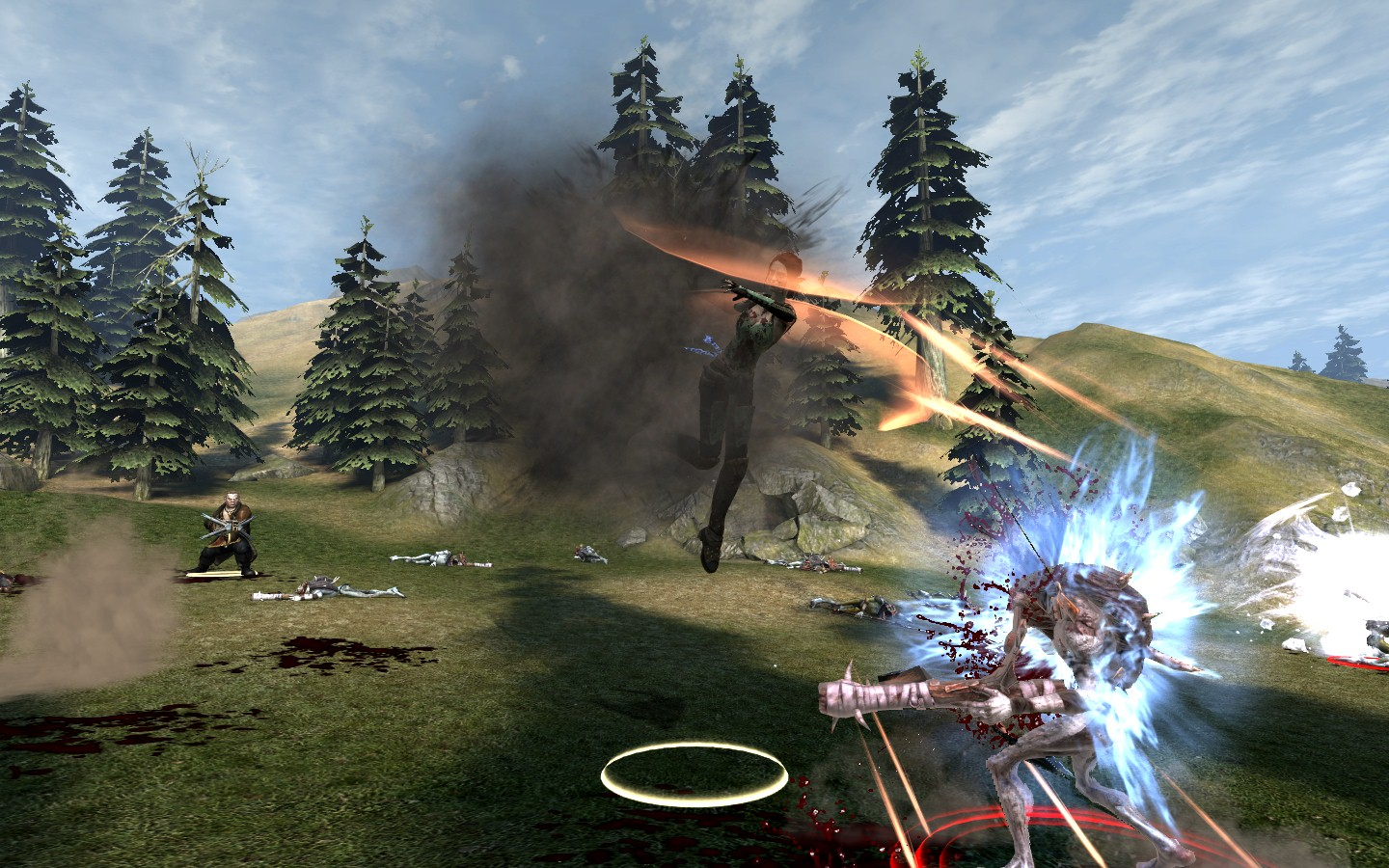

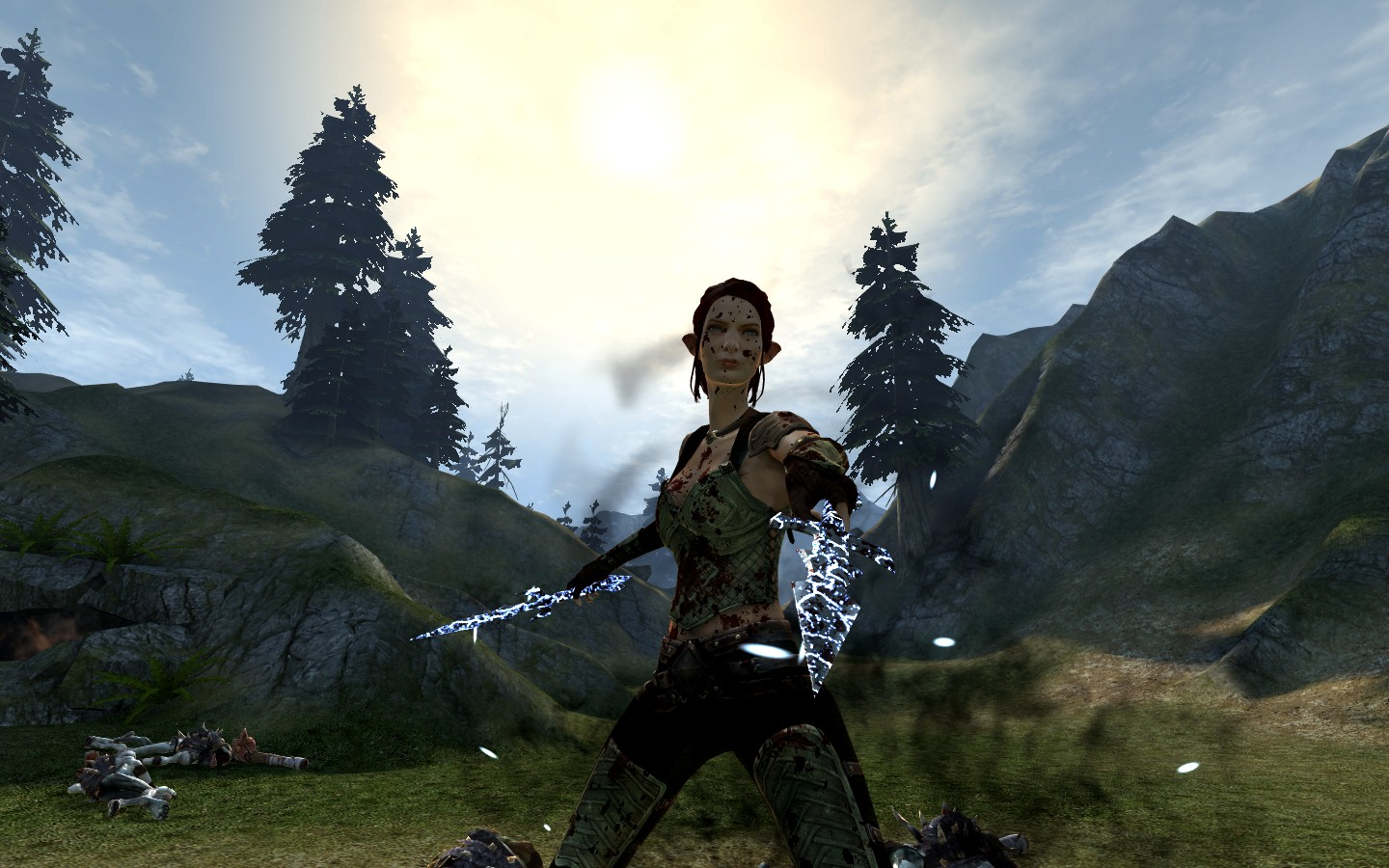








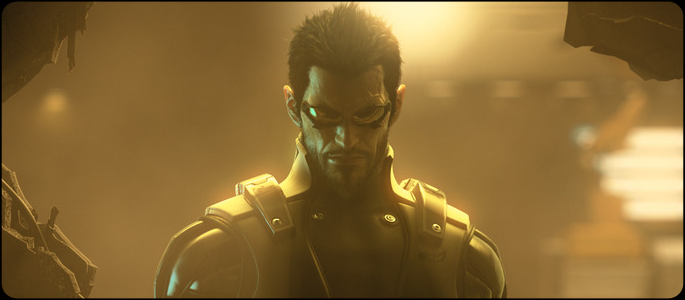 Deus Ex: Human Revolution isn't your average FPS/3rd-person RPG stealth game; it’s carefully designed with a focus on the word ‘choice’. Most definitely it is a fully fleshed-out game and I’m happy to say it took up most of my free time last week. Once you find yourself thoroughly investigating every e-mail, drawer, computer, loot, secret pathways, you’ll know the game has got you. The future never looked or played this good.
Deus Ex: Human Revolution isn't your average FPS/3rd-person RPG stealth game; it’s carefully designed with a focus on the word ‘choice’. Most definitely it is a fully fleshed-out game and I’m happy to say it took up most of my free time last week. Once you find yourself thoroughly investigating every e-mail, drawer, computer, loot, secret pathways, you’ll know the game has got you. The future never looked or played this good.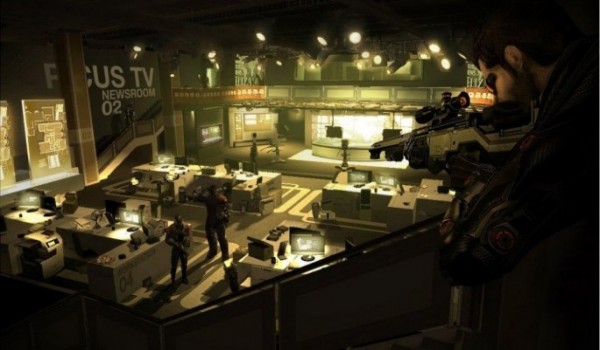 After running around, hacking computers and going through vents looking for those secret stashes, I came to see that the world wasn't as big as I’d hoped. Looking at the map of Detroit, I was shocked by how small it was, and the game’s other locations are about the same size.
After running around, hacking computers and going through vents looking for those secret stashes, I came to see that the world wasn't as big as I’d hoped. Looking at the map of Detroit, I was shocked by how small it was, and the game’s other locations are about the same size.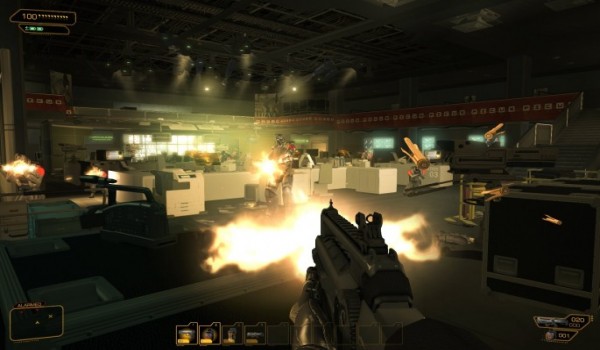 Frontal assault or stealth? You choose.
Frontal assault or stealth? You choose.